Measuring the microphone
Let's get to the microphone and its quality. In terms of character, it resembles almost an eight, so it is almost a double kidney. This reduces lateral noises, but not what comes from opposite. The Noise Cancelling is somehow there, but not really outstanding. The sound of one's own voice, on the other hand, is neat, with approx. 200 Hz downwards already a level drop is audible and measurable
Very deep male voices lose more volume as a result, but this is even beneficial for chats. A real low-cut isn't really, but it doesn't rumble. This also allows you to do without external pop protection if you don't put the headset on a llama.
The sensitivity is good and there is little noise. This can be posted on the credit side. In addition, there is also the high-cut, which already starts to take hold above 8 KHz. From approx. 10 KHz is all like cut off, which is good. Nobody needs the complete super high tone here anyway. The bottom line is that the microphone can be evaluated predominantly positively, even if the frequency curve (software-related?) is extremely hibernating. But it will certainly be rather difficult to hear this in detail. So gift edhely and forgive.
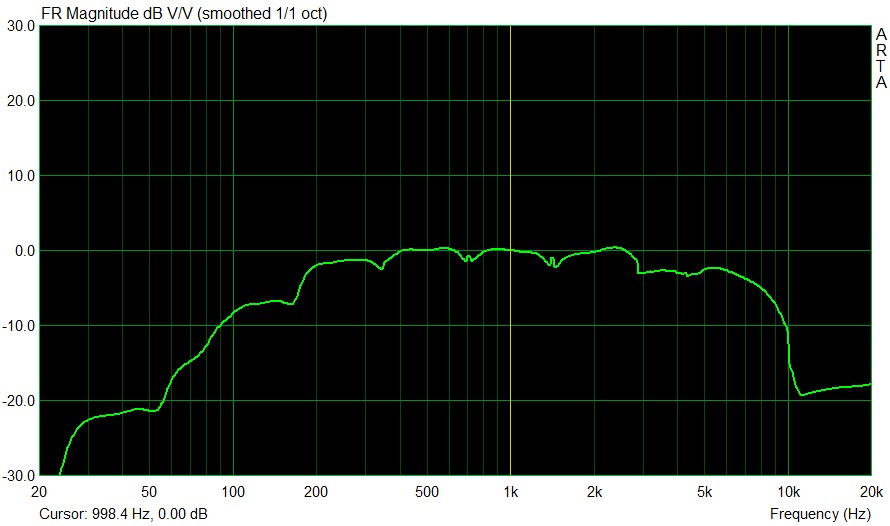
Measurement of headphone frequency history
Let's move on to measuring the quality of the headphones. I have again normalized the frequency curve at 1 KHz to 0 dB, so that on the one hand one can evaluate the overall course with all encores and frequency waste and on the other hand not completely loses the possibility of comparison to previous measurements. But it is still different, because the smoothing (1/1 octave) is supplemented by the almost unsmoothed representation (1/24 octave). All of this looks clearly "more hibbeliger", of course, but also fits much better with reality. Because one thing is also clear: it does not exist, the ideal curve.
I have deliberately tested WITHOUT installed drivers, but still can't rule out the pre-wired DSP games of the USB dongle. I will come to the electric sounding and the respective profiles later, because you have to lose a word about that too. But first Of all, I am only interested in the quality of the drivers (as far as this is possible with a USB Dingel-Dongel in the transmission chain).
We see an increase in the area of the upper bass at approx. 100 Hz, which is actually completely unnecessary in terms of sound technology, but just for Kevin-Klaus a higher bass volume pretends. However, this also draws the -3dB limit down to approx. 20 Hz. We see the second peak at approx. 2.7 KHz, which is certainly available to the gamer who determines his location in these frequency ranges. By the way, the super high tone is really good, because it goes well beyond 20 KHz. So the specs are right, at least to some extent. Even if with some trickery and without any indications of tighter tolerance ranges.
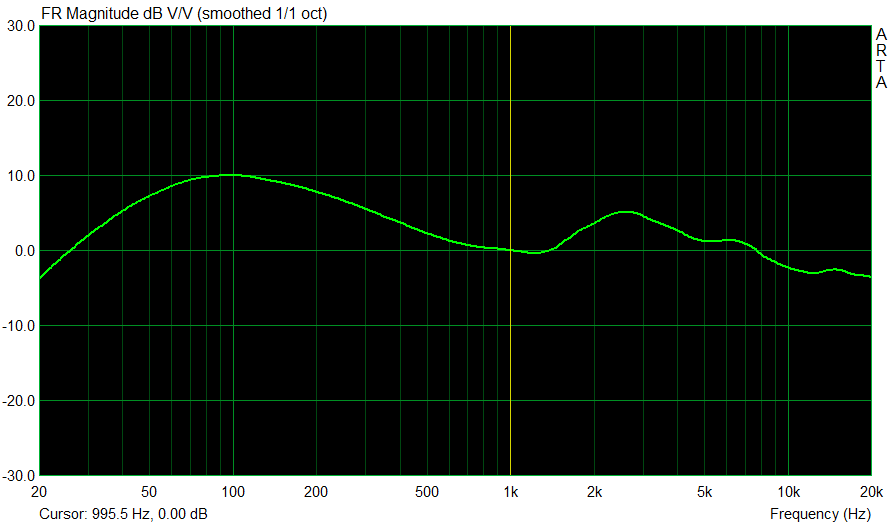
Now let's put aside the PR-compatible display and look at the unsmoothed curve. Here, of course, the "only" semi-professional measuring equipment also plays a role, but nevertheless the measured is pleasingly pleasant here as well. We can see here once more clearly that the bass tuning in the peak at approx. 88 Hz. This is certainly a compromise between draught and level strength.
What has been successful, however, is the fact that the bass boost does not result in a hole in the lower middles, which is very often the case with such tricks. However, this also allows the obvious assumption that this is a purely electric DSP solution and not a mechanical sounding.
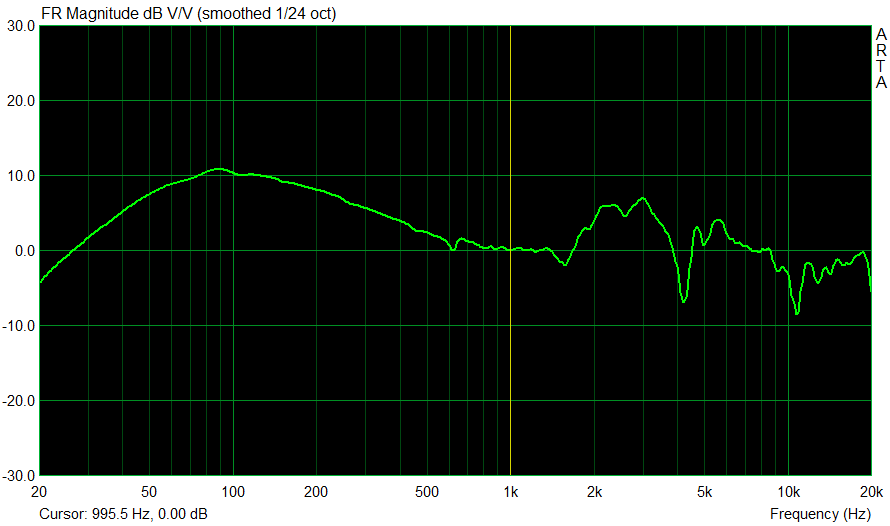
Cumulative Spectra (CSD and SFT)
The cumulative spectrum denotes different types of diagrams that show time-frequency properties of the signal. They are generated by successive application of the Fourier transformation and suitable windows to overlapping signal blocks. These analyses are based on the frequency response diagram already shown above, but also contain the element time and now show as a 3D graphic ("waterfall") very clearly how the frequency response develops over time after the input signal stopped. In colloquial terms, such a thing is also called "end" or "swingout".
Normally, the driver should also stop as fast as possible after the input signal has been dropped. However, some frequencies (or even entire frequency ranges) will always subside slowly and then continue to appear in this chart as longer-lasting frequencies on the timeline. This is a good way to see where the driver has glaring weaknesses, perhaps even "squealing" or where, in the worst case, resonances may occur and disturb the overall picture.
I will now test two types of cumulative spectrum:
Cumulative Spectral Decay (CSD)
Cumulative spectral decay (CSD) uses the FFT and a modified rectangular window to analyze the spectral drop of the pulse response. It is mainly used to analyze the speaker response. The CSD typically uses only a small FFT block shift (2-10 samples) to make resonances more visible throughout the frequency range, making it a useful tool for detecting the resonant of the converter.
The picture of the Sennheiser GSP 550 is good but not outstanding. It can be seen very clearly that in the range of approx. 700 Hz light resonances or vibrations occur. This could certainly be dampened a little more, but subjectively later on hardly any weight when listening. Between approx. 2 and 6 KHz there are also light reversing, which, however, after approx. 2 ms are also history. This is measurable, but rather not audible.
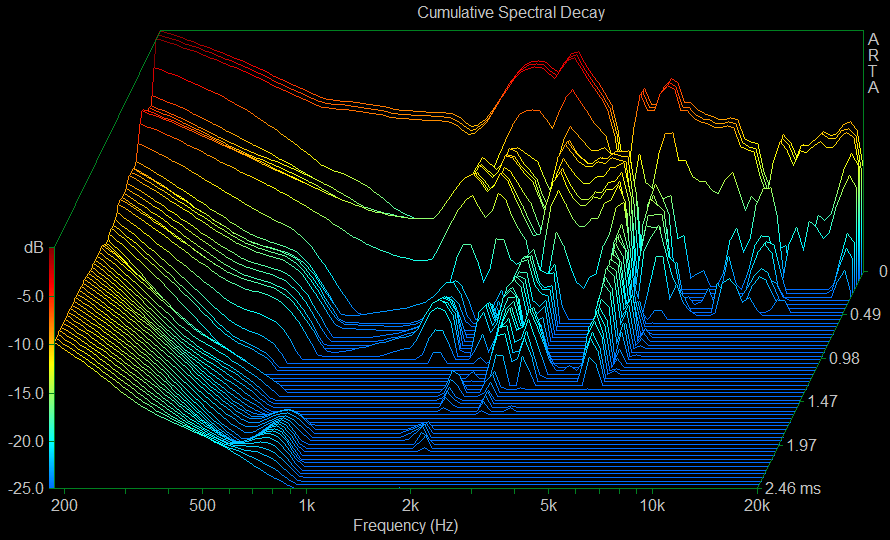
Short-time Fourier Transform (STF)
The Short-Time Fourier Transformation (STF) uses the FFT and Hanning windows to analyze the time-varying spectrum of recorded signals. In general, a larger block shift (1/4 to 1/2 of the FFT length) is used to analyze a larger part of the time-variable signal spectrum, whereby one gets closer to the fields of application such as language and music.
In the STF spectrum, we now also see very nicely the rather balanced work of the drivers, who do not afford any real weaknesses in any frequency range. By the way, we also see that the sound at approx. 2 to 3 KHz stays "standing" a little longer, which also applies again for the 6-KHz range. This produces a rather bright and crisp feeling, which from the point of view of the mainstream listener also corresponds well with the slightly greased bass.
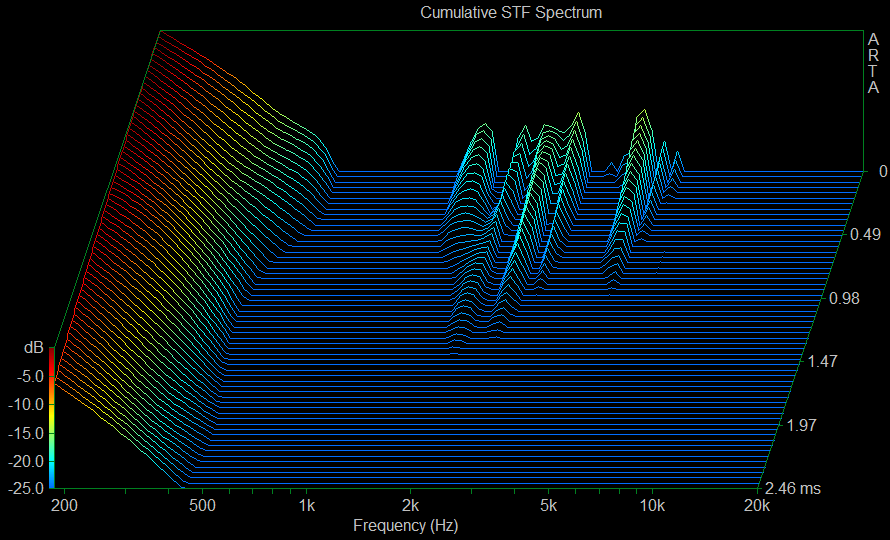
What remains as a summary is a good settling behavior, a good performance and the fact that one finds only slight resonances. This is not a bad requirement for a gaming headset. With music, however, I would hang the bar a little higher in this price range.
Selectable Sound Profiles (DSP)
Lord, please let it rain brain! I don't know who created these curves, but THAT everything except e-sports is useless, you can convince yourself by the curves. With Off we have the original curve (green) again. While in e-sports you logically take the bass away and raise the lower heights even further, this really suits the location. That's the way it goes.
If so, then you choose between off and e-sports. Especially the music preset makes the headset whimper senselessly, which completely becomes a total failure, because the peak was set far too high and too dominant. Then i would prefer the gaming preset, which even the sub-contraoctave for approx. 5 dB. The level strength is flute, but it blubbers much deeper and louder. But even this preset is, in my view, too much and therefore superfluous.
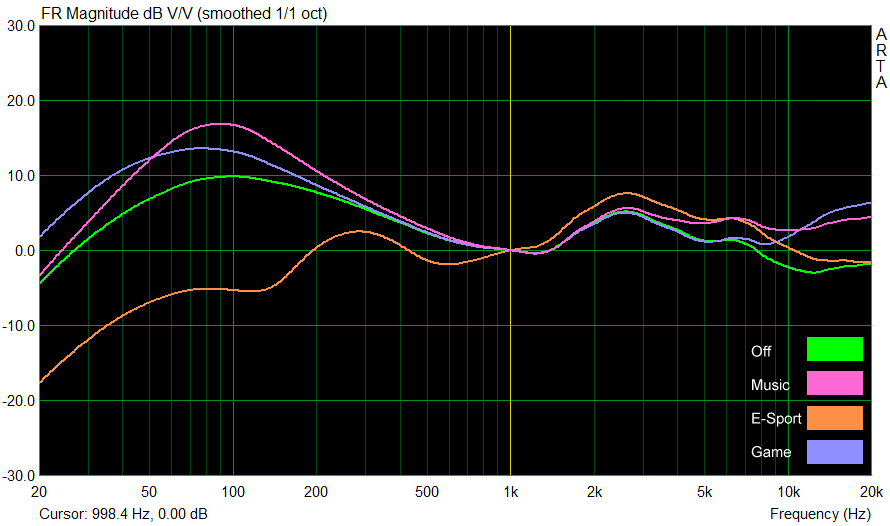
Why Sennheiser does not offer a freely definable EQ – no idea. That would definitely be a real gain. But you should even consider installing the software at all, if you don't necessarily need the surround effects. It really is not a help, but a measurable and audible worsening. Too bad actually.
Subjective listening experience
Now let's test subjectively what you get offered in the original without the offered sounding. However, as always, I locked the headset in the measuring room for almost 5 days beforehand and tormented it with a selected sound loop to scrub up operating hours. What not to do for our die-hard play fanatics among readers 🙂
Bass
Test the lowest bass in the subcontraoctave (16.4 Hz to 32.7 Hz) with a recording of Bach's Toccata and Fugue in D minor (19 and 25 Hz) and the Festival Overture 1812 by Tchaikovsky (10 Hz and 12.5 Hz). The same applies to the lower ranges of the contraoctothe (32.7 to 65.4 Hz). The big bass drum (kick drum), which in the U-music is a welcome companion and usually on approx. 55 to 60 Hz, this assessment will then be rounded off.
The bass is voluminous and also plays very deep. However, the bass drum is definitely too loud due to the peak and it almost roars to just below 100 Hz. In gaming and in movies with a good effect track, e.g. Explosions too bass-heavy and dominant. The problem with the drivers, however, is the dwindling resolution and the whitening of midtone nuances. Slightly less, would have been much more here, also with regard to the level strength, which then suffers quite noticeably.
The upper bass up to 150 Hz, in which also the Great Octave (65.4 to 130.8 Hz) is located, houses the basic language frequency of the male voice and decides very strongly on the true-to-life reproduction of male vocals.
Here the bass peak also has an effect and the male vowel acts very large-volume and dominant, the deeper the basic tone of the speaker. But you can like this type of game, everyone has to make up for it with themselves. For games this is quite suitable, with music I have my slight doubts, at least in terms of my listening habits.
Frequency range
The lower middles (also basic tone range) are approx. 150 to 400 Hz. Together with the already mentioned upper bass, this area plays a very important role for the subjectively perceived heat or bass. Fullness of the sound. The basic language frequency of female voices can be found in this area.
Female vocals sound pleasant and full, you can (and should) leave that. Especially since they are not completely ironed away by the slightly lower positioned, male voices. Choral works thus receive a rather coherent basis, on which it can then be built up perfectly upwards. And when it comes to gaming, the world is fine anyway, because this area is served quite neatly by the rather broadband sounds, but is not really vital.
The upper mids between 400 Hz and about two KHz contain a mark at a KHz, which is still considered a reference for many measurements. Unfortunately, this is often noticeable with cheaper devices, as manufacturers often try to overemphasize this frequency. This area does not play an insignificant role in gaming either, and balanced playback contributes significantly to good spatial resolution.
All of this comes to the ear quite clean and very nicely differentiated. The depth graduation is good, which surprised me very positively. In addition, there is also the slight increase at the upper end, which is particularly suitable for the spatial image. Let's put it this way: you really hear what you should hear.
High-pitched range
Between two and about 3.5 KHz, human hearing is most sensitive, especially since this area of the lower heights is responsible for the good overtone reproduction of the human voice. This frequency range is crucial for the recognition of a voice or instrument; in this context, one also speaks of the respective timbre.
The little dent sounds as if it was wanted, because it paints a lot of things in the overtone quite pleasingly and compensates for some inconsistencies in the bass. The gamer is also well served here, because this rather special peak gives him exactly the frequency range on the ear, which he believes he can not miss when playing when punishing his demise. I can live with the vote, no matter what genre.
The middle heights (3.5 to six KHz) decide on the sound or failure of the speech reproduction as a whole, because the S- and hissing (Sibilants) fall into this range. The upper heights then reach up to approx. ten KHz to move into the super high tone.
The high-frequency design is 5 KHz to approx. 20 KHz very even and completely without any highlights or negative points. The Sibilants are well modelled, but do not dominate too much. The same applies to blow-out noises. The typical gaming sound in this area, on the other hand, could tolerate a little more power. Especially small-caliber weapons are not "Crispy" enough and some hissing could have tolerated a little more bums. Ok, whining at a high level.
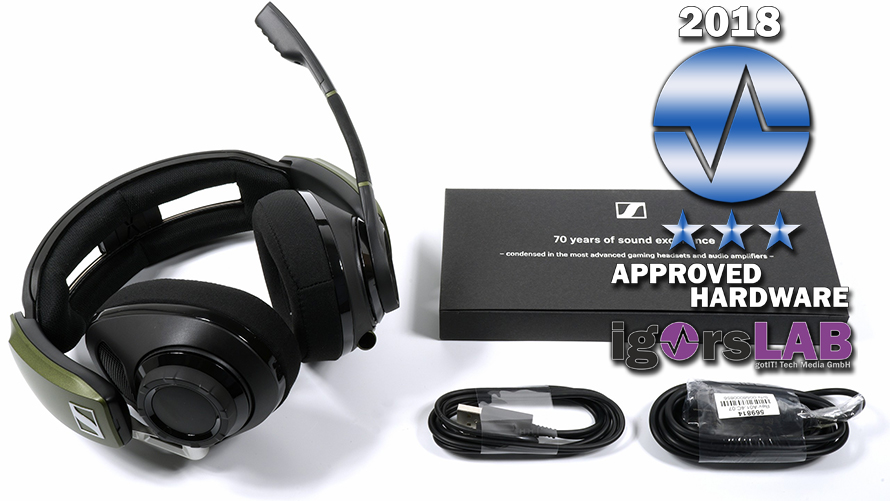
Summary and conclusion
The Sennheiser GSP 550 is not a zero number as a gaming headset, on the contrary. The mechanics are very neat, the seat and wearing comfort are acceptable to comfortable and even the long-term suitability gives no reason to criticize. The built-in drivers are not off the low-cost shelf and the USB sound solution is not bad per se. This is almost without restrictions proud lyrise on the credit side.
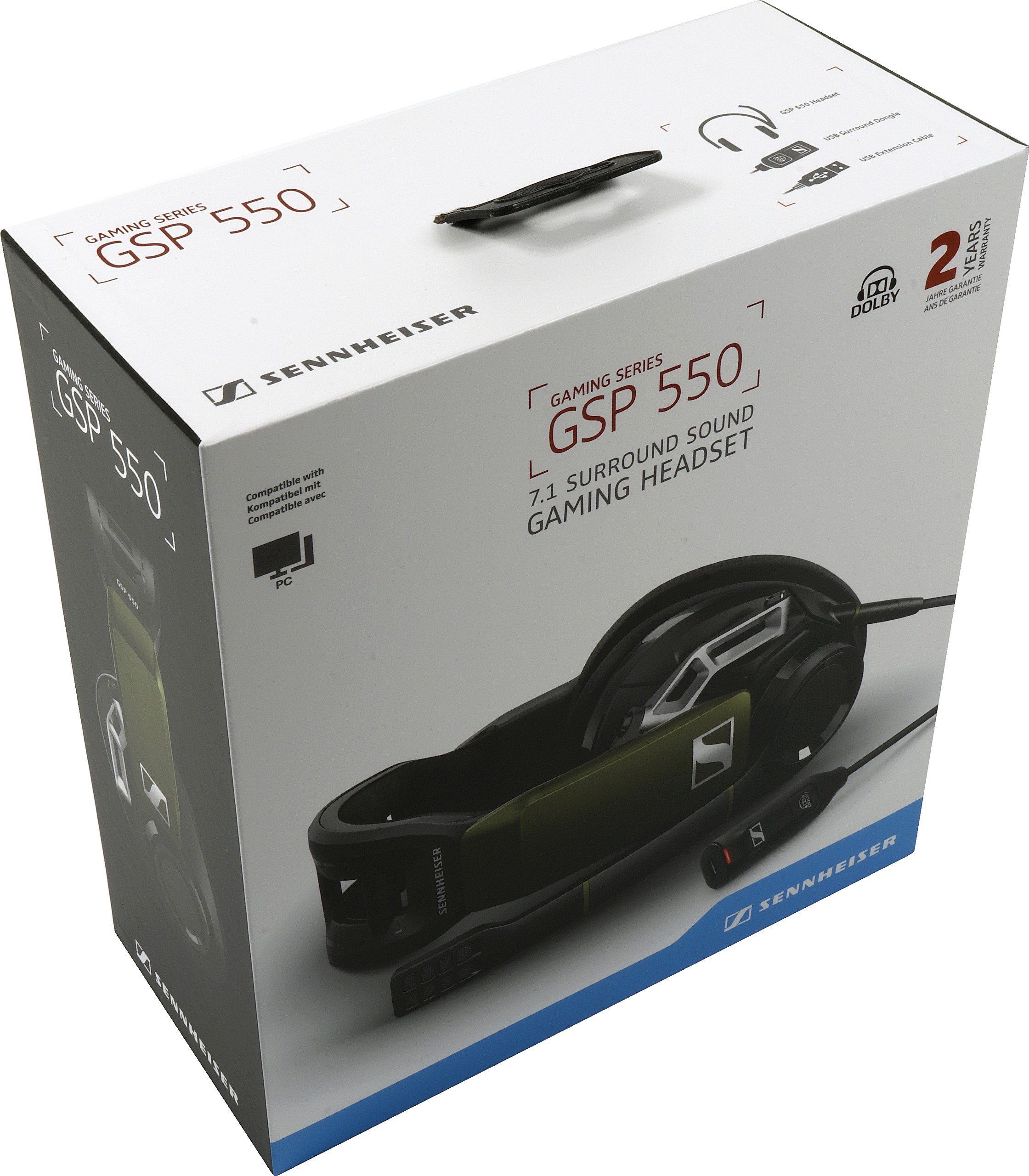 If you are into surround and Dolby effects, you will find a pretty good solution here, which can easily dig the water out of most other competitor products. Conexant's USB solution, including the USB Audio Effects SDK used, is in many ways preferable to the C-Media chips and their included libraries.
If you are into surround and Dolby effects, you will find a pretty good solution here, which can easily dig the water out of most other competitor products. Conexant's USB solution, including the USB Audio Effects SDK used, is in many ways preferable to the C-Media chips and their included libraries.
Even if a real amp would certainly have worked even more powerfully in terms of the maximum level. It is therefore a real pity that you cannot connect the headset directly. Another cable in the accessories, with a street price of 250 euros, doesn't really make the cabbage fat anymore, just more delicious.
Where, on the other hand, something is lacking, there are many details, such as the software, whose sound profiles are actually superfluous, while a manually operated equalizer is unfortunately searched in vain. The level strength could also have been slightly higher, because the bass peak takes the pressure off the open headset completely unnecessarily. We would have reached the USB dongle again, which probably simply does not give any more.
Which would have ended us at the end. 250 euros back and forth. You have to assess exactly where you want to focus. There's a big extra point for gaming and good location, but I wouldn't really want to listen to music for hours. In any case, not in this price range. This and the very limited-action software prevent a real purchase recommendation in the end. So this time it was due to the finish (software, optional connection cable) and not the headset as such, which is quite good.

































Kommentieren